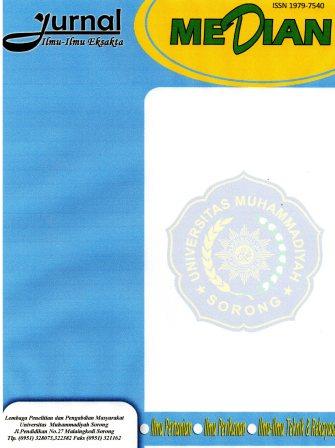the The Utilization Of Wild Animals As A Source Of Protein By The Tehit Knasaimos Ethnic Group In Saifi District, South Sorong Regency, Southwest Papua Province
DOI:
https://doi.org/10.33506/md.v15i2.2568Keywords:
utilization, wildlife, tehit knasaimos, saifi district, south sorongAbstract
The purpose of this research is to uncover the types of wild animals that serve as a source of animal protein for the Tehit Knasaimos ethnic group in Saifi District, South Sorong Regency, Southwest Papua Province. The descriptive method with survey techniques was used for this study. Data analysis was conducted using the UVs, ICF, and FL formulas. It was revealed that the utilization of wild animals as a source of animal protein is intended for self-consumption (subsistence), sale, traditional ceremonies, and religious events. The hunted wild animal species by the Tehit Knasaimos ethnic group amounted to 19 species, consisting of mammals (7 species), birds (5 species), reptiles (2 species), fish (1 species), and crustaceans (3 species). Wild boar (Sus scrofa) and dusky pademelon (Thylogale brunii) are the most extensively utilized wild animal species in the Tehit Knasaimos community (UVs = 0.22 - 0.61). The FL values in the four utilization categories by the Tehit Knasaimos ethnic group reveal that the most preferred wild animal species are wild boar (52.9% - 61.1%) and dusky pademelon (58.8% - 61.1%). The greater melampitta (Talegala jobiensis) is most preferred for ceremonial purposes (52.9%). The informants' information homogeneity is high to very high for self-consumption/subsistence utilization (ICF = 0.88 - 0.95), traditional purposes (ICF = 0.80 - 0.87), sale (ICF = 0.73 - 0.86), and religious purposes (ICF = 0.79 - 0.84). The long-beaked echidna (Zaglossus bruijnii) is an endemic New Guinea species that is protected due to its declining population in the wild.
References
Alikodra,H.S. 2010. Teknik Pengelolaan Satwaliar Dalam Rangka Mempertahankan Keanekaragaman Hayati Indonesia. Bogor: IPB Press.
Beehler, B. M., & Pratt, T. K., 2016. Birds of New Guinea: Distribution, Taxonomy, and Systematics. Princeton University Press.
Dounias, E., & Fa, J. E., (2001). Monitoring Sustainable Use of Tropical Natural Resources: Lessons from Indonesia and Papua New Guinea. Environmental Conservation, 28(04), 352-359.
Friedman, J., Yaniv, Z., Dafni, A., & Palewitch, D. (1986). A preliminary classification of the healing potential of medicinal plants, based on a rational analysis of an ethnopharmacological field survey among Bedouins in the Negev Desert, Israel. Journal of Ethnopharmacology, 16(2-3), 275-287.
Gazzaneo, L.R.S., Lucena, R.F.P., Albuquerque, U.P., (2005). Knowledge and use of medicinal plants by local specialists in a region of Atlantic Forest in the state of Pernambuco. J. Ethnobiol. Ethnomed. 1, 9.
Iyai D A. Murwanto A G. Killian A M. (2011). Sistem Perburuan dan Etnozoologi Biawak (Famili Varanidae) Oleh Suku Yaur Pada Taman Nasionsl Laut Teluk Cendrawasih. 2011. Biota, Vol.16 No.2; June 2011.
Iyai D A. Sada Y. Koibur J F. Bauw A. Worabay M S. Wajo M J. Pakage S. Wambrauw H. 2020. Potensi Pemanfaatan Satwa Liar Di Kampung Pasir Putih Kabupaten Fakfak Papua Barat. Jurnal Biologi Tropis. Vol.20 No.2 (2020)
May G. J. V., 2006. Etnozoologi Suku Karon Di Distrik Sausopor Kabupaten Sorong. 2006. https://scholar.gooogle.com
Meryani. 2021. Memahami Perbedaan Analisis Kualitatif dan Analisis Kuantitatif Dalam Penelitian Ilmiah. 2021. http://accounting.binus.ac.id/2021
Pattisellano F. and Arobaya A.Y. (2016). Perburuan Subsistens di Papua: Apakah Lestari?. Media Konservasi. 16, 2 (Aug. 2016).
DOI:https://doi.org/10.29244/medkon.16.2%p.
Phillips, O., Gentry, A. H., Reynel, C., Wilkin, P., & Galvez-Durand, B. C. (1994). Quantitative ethnobotany and Amazonian conservation. Conservation Biology, 8(1), 225-248.
Riadai R. Oramahi H A. Yusro F., (2019). Pemanfaatan Tumbuhan Obat Oleh Suku Dayak Knayatn Di Desa Mamek Kecamatan Menyuke Kabupaten Landak. Jurnal Hutan Lestari Vol.7 No.2. DOI: http://dx.doi.org/10.26418/jhl.v7i2.34559
Saturi S. 2018. Cerita Dari Kampung Sira Manggroholo, Upaya Warga Bentengi Hutan Papua dari Serbuan Sawit. Sorong Selatan. http://mangobay.co.id.
Sutarno S., Qayim I., Muhadiono I., Purwanto Y., Zuhud E A., 2019. Etnobiologi dan Pengelolaan Sumberdaya Hayati Berkelanjutan Masyarakat Hatam di Papua Barat. 2019. https//respository.ipb.ac.ia/handle/123456789/103355
Treyvaud Amiguet, V., J. T. Arnason, P. Maquin, V. Cal, P. S. Vindas, and L. Poveda. (2005). A consensus ethnobotany of the Q’eqchi’ Maya of Southern Belize. Economic Botany 59(1):29–42.
Trotter, R. T., & Logan, M. H. (1986). Informant consensus: a new approach for identifying potentially effective medicinal plants. In Plants in indigenous medicine and diet: Biobehavioral approaches (pp. 91-112). Redgrave Publishing Company.
Wibowo, A. (2021). Analisis Kesiapan Masyarakat dalam Pengelolaan Hutan Desa (Studi Kasus: Desa Wonorejo, Kecamatan Tawangmangu, Kabupaten Karanganyar). Jurnal Penelitian Sosial dan Ekonomi Kehutanan, 18(2), 103-120.
WWF Indonesia. (2019). Hutan Papua: Keanekaragaman Hayati yang Melimpah di Kawasan Tengah Papua. Retrieved from https://www.wwf.or.id/?14901/Hutan-Papua-Keanekaragaman-Hayati-yang-Melimpah-di-Kawasan-Tengah-Papua.
Yassir M. & Asnah, (2017). Pemanfaatan Jenis Tumbuhan Obat Tradisional di Desa Batu Hamparan Kabupaten Aceh Tenggara. JESBIO Vol. VI No. 2.
Downloads
Published
How to Cite
Issue
Section
License

This work is licensed under a Creative Commons Attribution-ShareAlike 4.0 International License.
Authors who publish with this journal agree to the following terms:
Authors retain copyright and grant the journal right of first publication with the work simultaneously licensed under a Creative Commons Attribution-ShareAlike (CC BY-SA)Â that allows others to share the work with an acknowledgement of the work's authorship and initial publication in this journal.
Authors are able to enter into separate, additional contractual arrangements for the non-exclusive distribution of the journal's published version of the work (e.g., post it to an institutional repository or publish it in a book), with an acknowledgement of its initial publication in this journal.
Authors are permitted and encouraged to post their work online (e.g., in institutional repositories or on their website) prior to and during the submission process, as it can lead to productive exchanges, as well as earlier and greater citation of published work.





